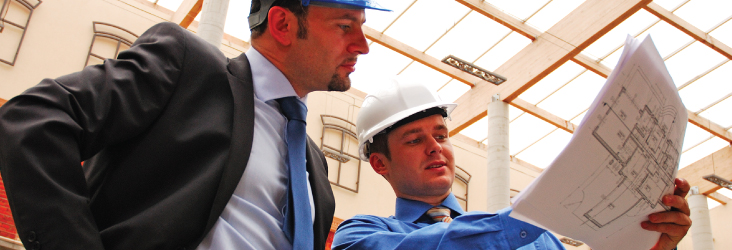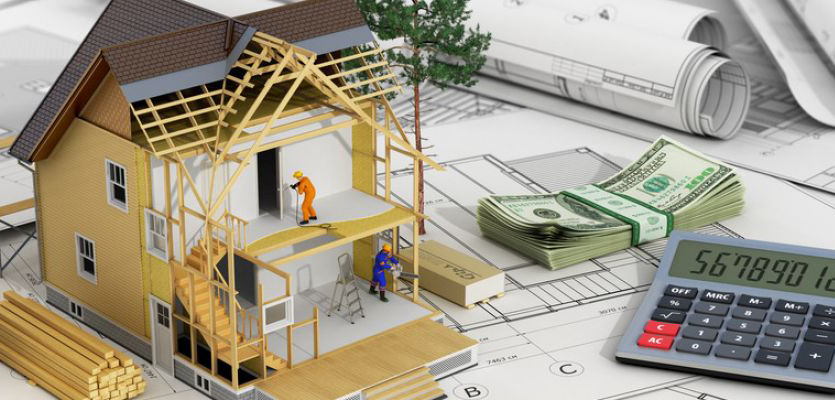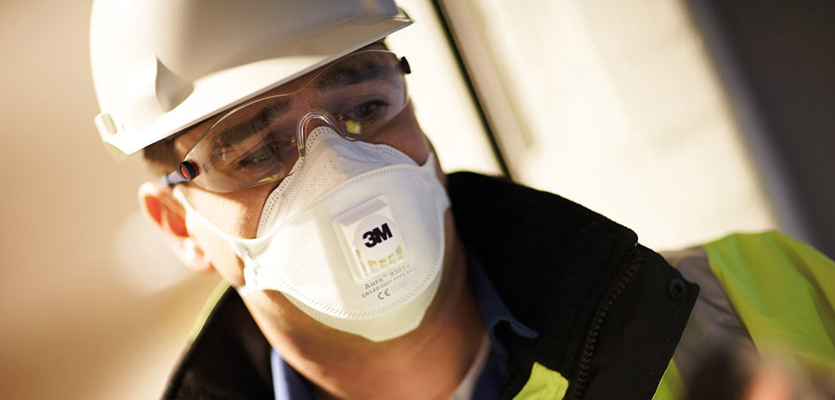Owner Builder Definitions
Owner builders & homeowners these definitions will help you understand the building process when dealing with the industry.
Ant Capping – Termite barrier (shield), usually of galvanised iron, placed over piers and dwarf walls to control the entry of termites.
Arch – A structure of wedged shaped blocks, or square blocks with wedge shaped joints, over an opening so disposed as to hold together when supported from the sides, and capable of carrying a load over the opening.
Architrave – A moulded section covering the joint between window and door frames and the wall lining.
Backfill – To fill the earth, any remaining space after placing concrete, brickwork, timber, pipes etc. in an excavation.
Bagging – A masonry process in which thin mortar is applied to the face of the work with some coarse material.
Barge Board – The board covering the roof timbers on the gable or skillion end of a roof, fixed parallel to the roof slope.
Bead – A moulding, generally of small size in cross section.
Beam – A horizontal load-bearing structural member.
Bearer – A member of floor framing, spanning piers and supporting joists.
Bed Joint – Horizontal joint in brickwork.
Bowing – Deformation of timber at right angles to its face.
Brace – Usually a diagonal, which resists lateral loads and/or movements of a structure.
Brick Construction – A construction where the external and internal walls are built of brick.
Brick Veneer – Timber framed construction with an outside skin of brickwork tied to the frame.
Building Line – A line established by the local council which is the minimum distance that must be maintained from the building to the street boundary.
Cantilever – A projecting beam supported at one end, or a large bracket for supporting a balcony or cornice.
Capping – The uppermost part on top of a piece of work.
Cavity Wall – A hollow wall, usually consisting of two brick walls erected 40-50mm apart and joined together with ties of metal.
Ceiling Joist – A structural member which binds the wall and roof framing together and carries the mass of the ceiling sheeting.
Cladding – Any material used to face a building or structure.
Cornice – A horizontal decorative moulding that is designed to provide an attractive finish at the junction of the wall and ceiling.
Crazing – Fine cracks that may occur on a plastered or rendered surface.
Cupping – Distorting of wide boards showing curvature across the grain causing the broad surface to be concave.
Damp Proof Course (DPC) – A barrier, usually physical, built into masonry to prevent moisture migrating up from the ground or down from above, e.g. chimneys, parapets.
Door Jambs – The two vertical members of a door or window frame.
Eave – The lower part of a roof that overhangs the walls.
Efflorescence – A white or coloured powder sometimes formed on the surface of masonry by the deposit of soluble salts.
Elevation – A geometrical drawing of a facade/wall of a building.
Expansion Joint – A joint in a building to permit thermal movement or creep.
Expansion Strip – A soft, resilient material used to fill the void provided for the expansion and contraction of any two adjacent substances.
Fascia – A board fixed horizontally to the lower ends of the rafters, to which guttering may be fixed. Also forms the outside board of a boxed eave.
Finishes – The final applied coat or natural surface of a material used in walls, ceilings or floors of a building.
Footing – The construction whereby the weight of the structure is transferred from the base structure to the foundation.
Foundation – The ground upon which the footings of a building are constructed.
Gable – The triangular end of a house formed at the end of a pitched roof, from eaves level to apex.
Hip – A slanting ridge formed by the intersection of two sloping roof surfaces at an external corner.
Lintel – A structural member or beam carrying loads over an opening.
Lyctus Borer – A borer that attacks sapwood or hardwoods. Masonry Brick, concrete, stone, artificial stone or terracotta laid in mortar.
Mitre – Half the angle of a joint, e.g. corners of door/window architraves.
Moisture Barrier – Material which is used to retard the flow of vapour or moisture into the floor or walls.
Moisture Content – Mass of water contained in timber expressed as a percentage of dry wood fibre.
Mortar – A composition of lime and/or cement and sand mixed with water in various proportions.
Nogging – A horizontal piece of timber fixed between studs in a framed wall.
Non-Load Bearing Wall – One which supports no vertical load except that of its own weight and merely defines spaces.
Overhang (Roof) – The section of a roof extending over the external wall.
Parapet – Low wall at the edge of a roof, balcony, bridge or terrace.
Party Wall – The wall between two adjoining buildings but common to and used to advantage of both buildings.
Pergola – An open framework over a path, terrace or patio.
Perpends – The vertical joints in a masonry wall. Plumb Vertical or perpendicular.
Quoin – The dressed or finished stones at the corners of a masonry home, sometimes faked in a stucco or wood structure.
Rafter (Common) – In roof construction, a timber framing member providing the principal support for the roofing material.
Reinforcing Fabric (Reo) – Prefabricated steel reinforcement for concrete, consisting of an oblong or square mesh of parallel steel wires welded at points of contact and manufactured in flat sheets or rolls.
Retaining Wall – Any wall subjected to lateral pressure other than wind pressure and built to retain material.
Ridge – The horizontal member at the highest point of a roof where the common rafters meet.
Roof Pitch – The angle formed between a sloping roof surface and a horizontal line.
Roof Truss – A frame designed to carry the loads of a roof and its covering over the full span without intermediate support.
Rough in – To lay out the basic lines of electrical or plumbing requirements, without making the final connections.
Sarking – A covering of water-proof building paper beneath the external roof covering.
Sash – The framework in a window, into which the glass is fitted.
Soffit – The lower face or under-surface of anything (arch, eaves of a roof).
Stud – A vertical member in wall framing.
Suspended Ceiling – A ceiling which is suspended from and is not in direct contact with the floor or roof construction above and generally used to conceal services.
Underpinning – The construction of new footing and walling under the footings of an existing structure which have failed or may fail.
Valley – The internal angle formed by two inclined slopes of a roof or an internal corner.
Wall Tie – A steel wire tying brickwork to a timber frame.
Weep Holes – Openings left in the perpend of a brickwork course over flashings and at the bottom of wall cavities for drainage purposes.

Planning Kits
Maximizing the savings on your owner builder project comes down to efficiencies and organisation. Save your time and money with our Planning Kits.

Insurance
Owner building can be a rewarding experience but one part that can be an issue is insurance. Without Insurance you might lose your home & still have a mortgage.

Education
Develop your knowledge and skills by accessing our range of presentations and courses designed for you, to help you save time and money.

Save Real Money
Is a handy size, easy-to-understand 170 page booklet specifically for the Owner Builder written by expert trades-people and educators. A must for any Owner Builder.
Latest News
Keep up to date
Keep yourself updated with the latest news and current news on all things Owner Building.
Have a question
ASK US?









